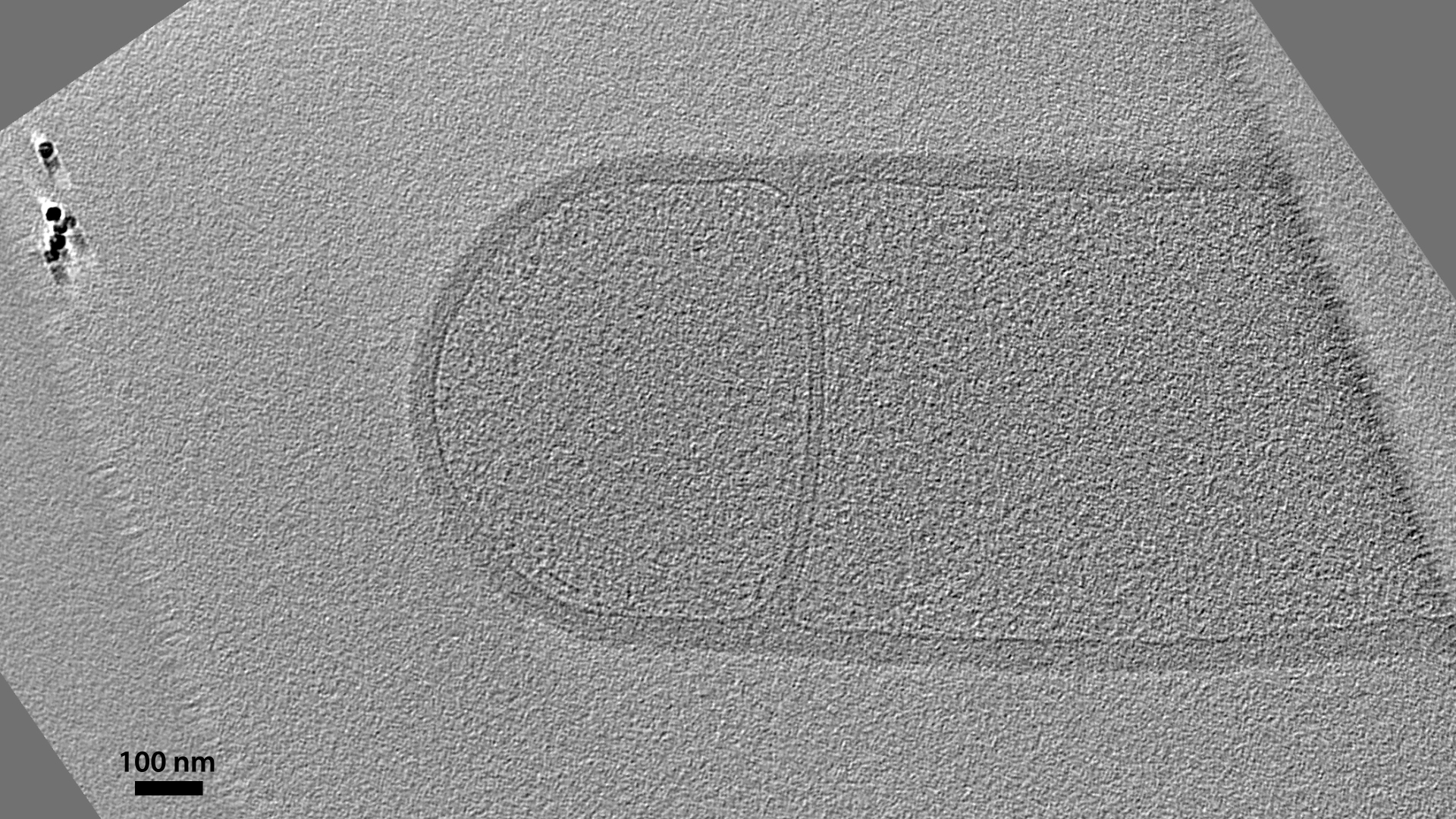The strategies we just discussed can help your cell deal with lean times. But what if things get really bad? Maybe you need to build your cell a survivalist bunker. Some species of bacteria do just this, using a modified cell division program to create a special reinforced daughter cell called a spore. Spores are extremely resistant to dehydration, acid, heat and other dangers. They are a purely dormant cell form, neither growing nor dividing, but simply waiting for improved conditions.
Some bacterial species form exospores, which are released directly to the environment as in a normal division. Others, like monoderm Bacillus subtilis, form endospores, which mature inside the protective envelope of the mother cell. As you can see in this cell, the first step resembles an asymmetric (closer to one pole) but otherwise normal cell division, with a septum of cell wall separating the compartment that will become the spore. Unlike in regular monoderm division, though, in which the septum is the same thickness as the rest of the cell wall, the sporulation septum is thinner, containing fewer layers of peptidoglycan (⇩).
Note: This cell (and the ones on the next two pages) is narrower than normal B. subtilis; a cell wall remodeling enzyme has been removed from its genome, leaving essential functions like cell wall growth and division (and sporulation) intact, but making the cells narrower and therefore better to image by cryo-ET.




